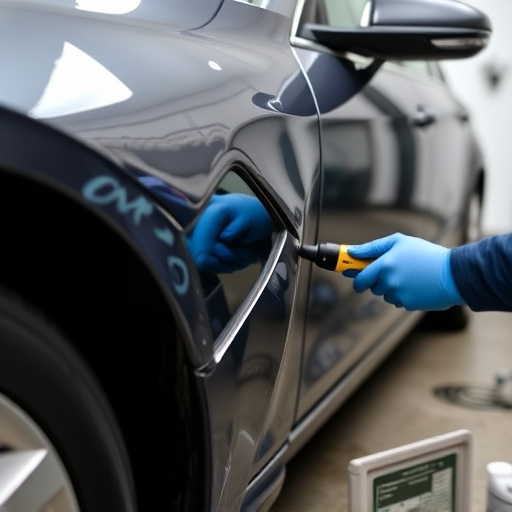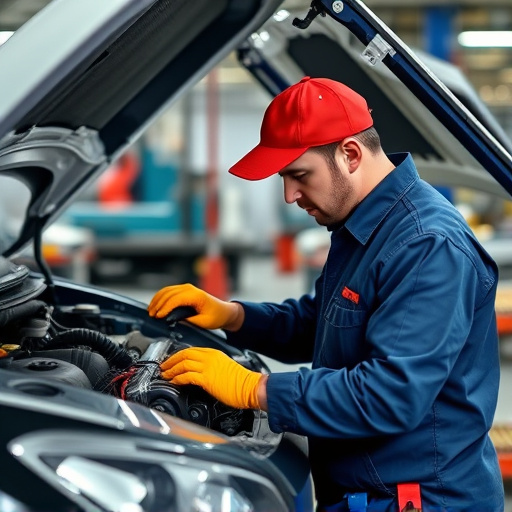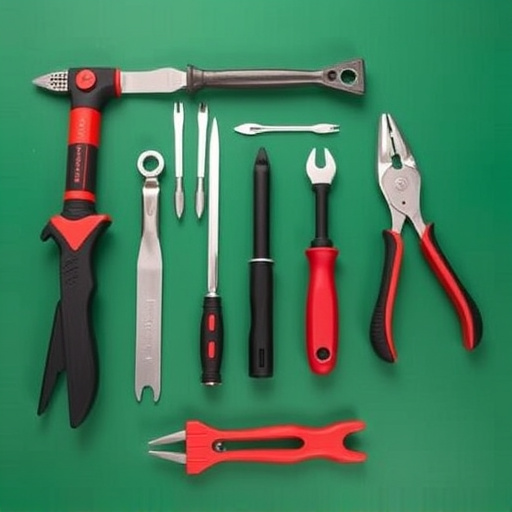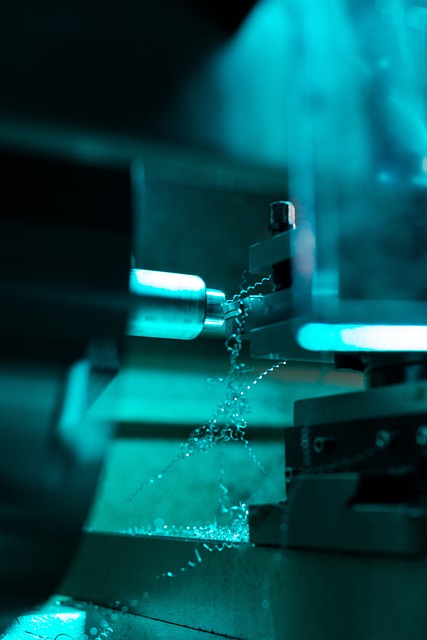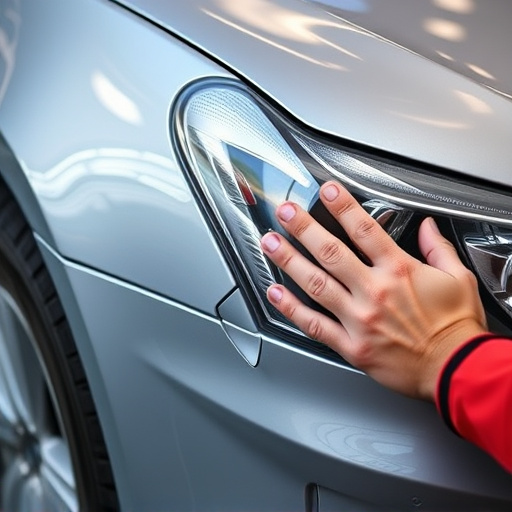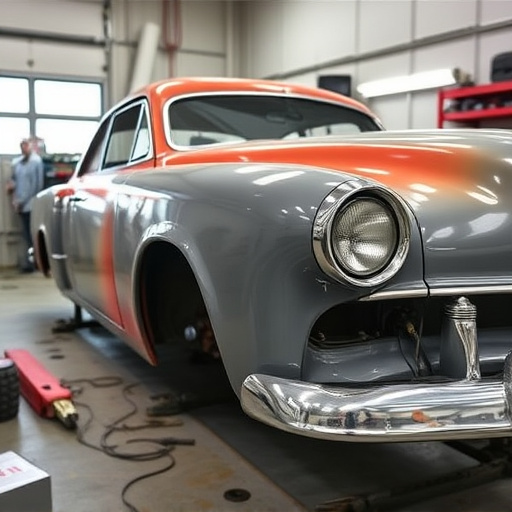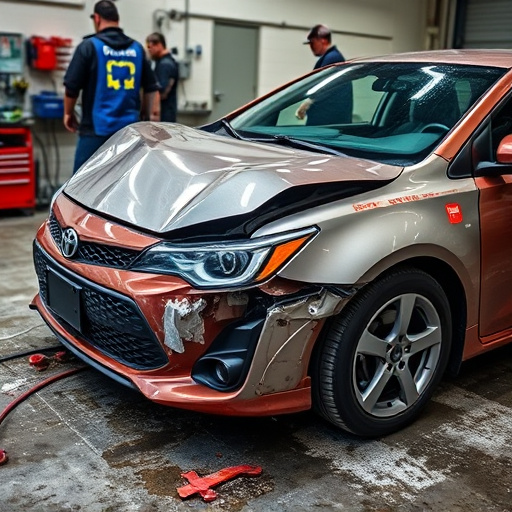OEM glass replacement ensures vehicle safety and quality by adhering to manufacturer standards. At-home installation can save costs with proper tools (putty knife, caulk) and supplies (OEM glass, parts from reputable suppliers). Choose precision tools and genuine parts for accurate, durable repairs, avoiding time-consuming processes like car dent removal.
Looking to replace your vehicle’s OEM (Original Equipment Manufacturer) glass? This comprehensive guide is tailored for complete beginners, offering a step-by-step approach to a successful DIY project. We’ll demystify OEM glass, highlighting its advantages, and provide essential tools and supplier tips. From understanding the process to choosing the right parts, you’ll be equipped to navigate this task confidently. Get ready to transform your vehicle’s safety and style with expert advice on OEM glass replacement.
- Understanding OEM Glass: Definition and Benefits
- Steps for Successful Glass Replacement at Home
- Choosing the Right Tools and Suppliers for OEM Parts
Understanding OEM Glass: Definition and Benefits
OEM glass, or Original Equipment Manufacturer glass, refers to the specific glass components designed and manufactured by the vehicle’s original producer. When it comes to OEM glass replacement, this means using glass that matches the exact specifications, dimensions, and optical properties of the original equipment. The benefits are numerous for both vehicle owners and repair specialists. For starters, OEM glass ensures a seamless fit and finish, maintaining the vehicle’s structural integrity and aesthetic appeal. This is particularly crucial in areas like window frames, door sills, and sunroofs, where improper alignment can lead to water intrusion and other issues.
Moreover, OEM glass replacement is beneficial for safety. Factory-original glass is designed with specific impact resistance and clarity requirements, which are critical for driver visibility and crash safety. Using lower-quality or aftermarket glass in a vehicle collision repair could compromise these vital safety features. Therefore, when undertaking any dent removal or car dent repair, especially following a vehicle collision, it’s imperative to consider the advantages of OEM glass replacement for both performance and peace of mind.
Steps for Successful Glass Replacement at Home
Attempting an OEM glass replacement at home can be a cost-effective solution for those looking to avoid expensive dealership prices or collision repair shops. Before beginning, gather all necessary tools and materials, including the new OEM glass, a putty knife, and automotive grade silicone caulk. Ensure proper ventilation in your work area as the fumes from the adhesive can be strong.
Start by removing any trim pieces or seals surrounding the broken glass to gain clear access. Next, carefully pull out the shattered glass, taking care not to damage the surrounding areas. Clean the opening thoroughly and apply a bead of silicone caulk around the edge of the new OEM glass, following the manufacturer’s instructions for proper curing time. Once set, install the new glass, securing it firmly in place. For a professional finish, trim any excess caulk with a putty knife and ensure all seals are tight, effectively completing your automotive restoration project.
Choosing the Right Tools and Suppliers for OEM Parts
When embarking on an OEM glass replacement project, selecting the appropriate tools and suppliers is a critical step that can make or break the entire process. It’s essential to choose tools specifically designed for precision and quality in auto body repairs, as they will ensure clean cuts and seamless installations. Look for kits that include a variety of blades suitable for different types of glass and vehicle models, along with safety equipment like gloves and goggles.
For parts procurement, opt for reputable suppliers specializing in OEM glass replacement components. These experts carry genuine or certified equivalent parts, ensuring compatibility and durability. Fleet repair services often rely on these suppliers due to their ability to provide fast turnaround times and high-quality products. Additionally, some suppliers offer custom solutions, which can be beneficial for unique vehicle models or rare glass types, eliminating the need for cumbersome car dent removal processes.
OEM glass replacement is a DIY process that, with the right knowledge and tools, can save you money and offer superior performance. By understanding the benefits of OEM glass and following the outlined steps, you can successfully replace your vehicle’s glass at home. Remember to choose reputable suppliers for high-quality parts, ensuring a safe and efficient experience. This beginner’s guide provides a solid foundation for navigating the world of OEM glass replacement.


